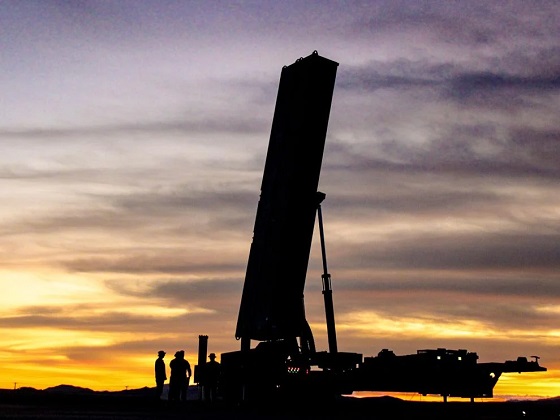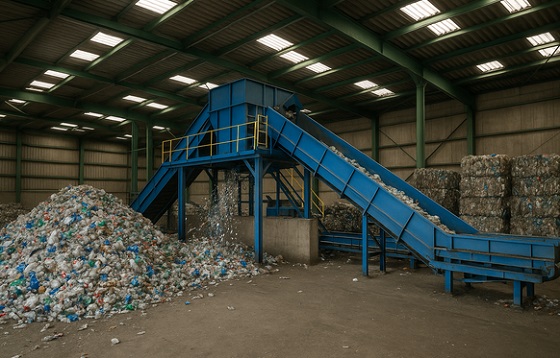illegal immigration
Kamala Harris, Immigration Extremist

From The Center for Immigration Studies
By Todd Bensman
AUSTIN, Texas — During the violent social justice upheavals of 2019-2020, Democratic primary candidate for President Sen. Kamala Harris told America exactly where she stood on illegal border immigration, no matter how she might spin it now that she is the Democratic Party’s presumptive nominee for president.
American voters should not forget the politically extreme positions she staked just a few years ago, as thousands of “Occupy ICE” hooligans were disrupting detention and deportation operations. “Abolish ICE” was the street chant as arson fires burned major cities and an AR-15-armed Antifa terrorist named Willem van Spronsen died in a fiery July 2019 attack on a Washington State ICE detention facility.
What American voters should remember about this period, now that they regard the border crisis as a top 2024 campaign issue, is that Harris went all-in with the most extreme agenda on border security in American history and has neither said nor acted once in any way contrary to those early positions, other than to tone down rhetoric while serving as vice president.
Taking Up the Extremist Cudgel
Just one week after ICE agents killed van Spronsen and found his manifesto demanding an end to corporate profiteering from private detention centers and their human suffering, Sen. Harris all but rewarded the attack with a tweet that mainstreamed the terrorist demand:
During a June 2019 televised primary debate, she reiterated that “I will get rid of the private detention centers.”
Harris was always at the forefront of Democratic primary contenders adopting the extreme immigration policy demands of a violent progressive movement high on the smoke of anti-police BLM arson, antifa attacks on Trump supporters, and Occupy ICE campfires. Indeed, Harris began messaging as her own the most fringe ideas about immigration and the border ever heard on the main American public square.
Abolish ICE. End all deportation and detention. Extend U.S. asylum access to all comers so they can stay and disappear. Grant citizenship to millions of illegal immigrants. Free healthcare to all. Stop the wall.
The van Spronsens of a border security abolitionist movement burgeoning among progressives at the time were pushing an extreme agenda driven by an ideology unchained from the Democratic Party basement to dismantle immigration enforcement as cruel and inhumane, a violation of human rights like Jim Crow laws and slavery.
They demanded the dismantling of ICE “concentration camps” full of detained latter-day Jews who this time were illegal-immigrant brown people, an end to deportation “death flights” home, the dismantling of ICE’s Nazi jack-booted brown shirts, abolition of laws deterring illegal immigration, and a southern border opened wide to anyone in the world who might feel like crossing it as an inalienable civil right.
Yes on “Abolish ICE” — and Immigration Law Enforcement with It
Harris went full throttle with the narrative that ICE agents she may one day lead were indeed the racist thugs everyone was saying they were.
“Certain communities saw ICE as comparable to the Ku Klux Klan for administering its power in a way that is causing fear and intimidation, particularly among immigrants and specifically among immigrants coming from Mexico and Central America,” Harris accused during a Senate confirmation hearing of Trump’s nominee to lead ICE, Ronald Vitiello.
Then-Sen. Harris responded on MSNBC in 2019 to a question about abolishing ICE that the United States should “probably think about starting from scratch” on enforcing immigration laws, while a spokesperson for Harris said the senator was weighing “a complete overhaul of the agency, mission, culture, operations”.
None of this could be said to be opportunistic at the time, either. In 2015, while serving as California’s Attorney General, Harris told the CBS affiliate in Los Angeles that “An undocumented immigrant is not a criminal. I know what a criminal looks like who’s committing a crime. An undocumented immigrant is not a criminal.”
In fact, illegally crossing the southern border is a federal misdemeanor punishable by up to six months in prison for a first offense and a felony on subsequent violations.
She was one of the candidates who raised a hand at another debate when asked if she supported decriminalizing illegal crossings and when asked if she would give free healthcare to illegal immigrants.
In a 2019 interview with National Public Radio, candidate Harris expressed a willingness as president to declare all illegal border-crossers refugees based on unconfirmable claims of political violence, even if that meant ignoring the law, despite well-known reporting that many let in on such claims disappear into the nation’s illegal immigrant population:
I disagree with any policy that would turn America’s back on people who are fleeing harm. I frankly believe that it is contrary to everything that we have symbolically and actually said we stand for. And so, I would not enforce a law that would reject people and turn them away without giving them a fair and due process to determine if we should give them asylum and refuge. (Emphasis added.)
Harris’ presidential campaign website took a page from Antifa and Black Lives Matter ideology handbooks about dismantling detention and deportation infrastructure, declaring her belief that “[W]e must fundamentally overhaul our immigration enforcement policies and practices — they are cruel and out of control.” She promised to “increase oversight” of agencies like the U.S. Border Patrol were she to be elected.
Expect claims from Harris supporters that, well, this was a primary campaign intended to appeal to the party base and she didn’t really mean any of it.
That’s not believable if Wall Street Journal reporting this week is accurate. People who have worked with Harris over the years told the Journal she only takes up a policy idea after “detailed deliberations … and has been reluctant to always endorse immediate, sweeping policy changes” before achieving full understanding.
“She really wants to understand what the data and evidence is to support a potential course of action,” Jill Habig, who worked for Harris in different roles over the years, is quoted saying. “She really wants to understand not just the idea in theory, but how it’s actually going to work in practice.”
Toning Down in High Office in Favor of Denialism and Gaslighting
Harris went on the down-low about her policy views after becoming vice president, but repeatedly denied a mass migration crisis was underway at the southern border, refusing to visit there, and, when she finally did under pressure, staying indoors in controlled environments with the television cameras.
When Florida Gov. Ron DeSantis sent some illegal immigrants to Martha’s Vineyard to make a political point in September 2022, Harris was quoted insisting the administration’s policies had “closed” the border when, in fact, hundreds of thousands had just crossed.
Local TV quoted one of the Martha’s Vineyard immigrants refuting the vice president’s absurd claim. “It’s open, not closed. The border is open,” the gentleman responded in English when asked about Harris’ claim that it was closed. “Everybody believes the border is open. It’s open because … we entered! We come in. Free. No problem.”
As vice president, Harris has regularly blamed “root causes” and “climate change” for the vast influx that began right after she and Biden took office and implemented an extreme vision straight from the burning streets of blue cities. Immigration was all so very “complex”, Harris explained during a state visit to Central America to get the strategy up and running.
During an April 2021 roundtable discussion Harris said:
We are looking at extensive storm damage because of extreme climate. We’re looking at drought in an area in a region where agriculture is one of the most traditionally important bases for their economy. We’re looking at what’s happening in terms of food scarcity as a result of that and in fact, incredible food insecurity, which we used to call hunger, food insecurity.
Whatever the Democratic Party nominee might float about her plans for border security over the next four months, Americans concerned about what she and Biden have done at the border should know that, in her case, past definitely is prologue.
Daily Caller
DOJ Releases Dossier Of Deported Maryland Man’s Alleged MS-13 Gang Ties


From the Daily Caller News Foundation
By Katelynn Richardson
The Department of Justice (DOJ) released documents Wednesday demonstrating Kilmar Armando Abrego Garcia’s membership in the MS-13 gang.
Abrego Garcia’s police interview, immigration court rulings and Department of Homeland Security (DHS) deportable/inadmissible alien record highlighting his membership in the gang, which he has disputed in court, are included in the release.
In a December 2019 decision, the Board of Immigration Appeals dismissed Abrego Garcia’s challenge to an immigration judge’s factual finding that he is “a verified member of MS-13.”
The board found the immigration judge “appropriately considered allegations of gang affiliation against the respondent in determining that he has not demonstrated that he is not a danger to property or persons.”
Officers found Abrego Garcia loitering in a Home Depot parking lot on March 28, 2019, wearing “a Chicago Bulls hat and a hoodie with rolls of money covering the eyes, ears and mouth of the presidents on the separate denominations,” the initial Prince George’s County Police Department Gang Field Interview Sheet states.
“Wearing the Chicago Bulls hat represents that they are a member in good standing with the MS-13,” the document states. “Officers contacted a past proven and reliable source of information, who advised Kilmar Armando ABREGO-GARCIA is an active member of MS-13 with the Westerns clique. The confidential source further advised that he is the rank of ‘Chequeo’ with the moniker of ‘Chele.’”
The administration became embroiled in a legal dispute after Abrego Garcia, who entered the country illegally in 2011, was deported in March to El Salvador as a result of an error. In court records, they argued Abrego Garcia could not “relitigate the finding that he is a danger to the community.”
A lower court ordered his return, but the Supreme Court required it to clarify the order and directed the administration to “facilitate” Abrego Garcia’s release.
The Department of Justice (DOJ) indicated Wednesday that it would appeal the amended order Judge Paula Xinis issued which directed the government to “take all available steps to facilitate the return of Abrego Garcia to the United States as soon as possible.”
During a Monday meeting with President Donald Trump, El Salvadoran President Nayib Bukele said he would not “smuggle” a terrorist into the U.S.
The Department of Homeland Security (DHS) also released court filings Wednesday showing Abrego Garcia’s wife requested a domestic violence restraining order against him.
illegal immigration
Despite court rulings, the Trump Administration shows no interest in helping Abrego Garcia return to the U.S.


 By Greg Collard
By Greg Collard
With research assistance from James Rushmore
Timeline: The Case of Kilmar Armando Abrego Garcia
With President Trump sitting next to him, El Salvador President Nayib Bukele told reporters in the Oval Office on Monday that no, he is not going to release Kilmar Armando Abrego Garcia from his country’s Terrorism Confinement Center (CECOT), despite a Justice Department lawyer admitting in a court filing that Abrego Garcia’s deportation last month was an “administrative error.”
No matter, Bukele said when asked if would return him to the U.S.:
Bukele: Of course I’m not going to do it. The question is preposterous. How can I smuggle a terrorist into the United States. I don’t have the power to return him to the United States.
Reporter: But you could release him inside El Salvador.
Bukele: Yeah, but I’m not releasing, I mean I’m not very fond of releasing terrorists into our country. We just turned the murder capital of the world into the safest country in the Western hemisphere, and you want us to go back into releasing criminals so we can go back to being the murder capital of the world? That’s not going to happen.
Not that there was any doubt what Bukele would say. Attorney General Pam Bondi set the tone early on in the meeting. She explained what the Supreme Court meant last week when it said a lower court ruling “properly requires the government to ‘facilitate’ Abrego Garcia’s release from custody in El Salvador.”
The Supreme Court ruled, president, that if El Salvador wants to return him … we would facilitate it, meaning provide a plane.
It brings to mind President Clinton’s infamous grand jury testimony when he said: “It depends upon what the meaning of the word ‘is’ is.”
Abrego-Garcia left El Salvador and illegally entered the U.S. in 2011. His status as an illegal immigrant changed after he was arrested in 2019 and the Department of Homeland Security accused him of being a member of the MS-13 gang. Abrego Garcia fought the accusation and applied for asylum. Instead, an immigration judge granted him “withholding of removal” status.
A federal judge wrote in an April 6 opinion that in El Salvador “the Barrio 18 gang had been targeting him and threatening him with death because of his family’s pupusa business.”
The Justice Department argues its hands are tied. It doesn’t matter that the U.S. is paying El Salvador $6 million a year to house U.S. deportees at CECOT.
“The United States does not have control over Abrego Garcia. Or the sovereign nation of El Salvador,” says one court filing.
Below is a timeline of the case since Abrego Garcia was arrested last month, leading up to Monday’s Oval Office meeting with Bukele.
March 12-15, 2025
ICE agents stop Abrego Garcia and tell him that he is no longer under “withholding of removal” status. The Trump administration says he is a member of the MS-13 gang, which the president has designated a foreign terrorist organization.
Abrego Garcia, who denies he is part of MS-13, is sent to an ICE detention facility in La Villa, Texas, and from there he is deported to El Salvador on March 15 along with 260 others, primarily Venezuelan nationals. He is being held in CECOT, a prison that has a capacity of 40,000 inmates.
March 24, 2025
Abrego Garcia and his wife, Jennifer Vasquez Sura, file a lawsuit that notes Abrego Garcia has been in the U.S. legally since 2019 under withholding of removal status, and that the designation was never lifted.
They also accuse the government of sending Abrego Garcia to El Salvador despite “knowing that he would be immediately incarcerated and tortured in that country’s most notorious prison; indeed, Defendants have paid the government of El Salvador millions of dollars to do exactly that. Such conduct shocks the conscience and cries out for immediate judicial relief.”
The lawsuit requests the court order the U.S. government to tell the government of El Salvador to release and deliver Abrego Garcia to the U.S. Embassy in San Salvador.
March 31, 2025
The Justice Department acknowledges in a court filing that “although ICE was aware of his protection from removal to El Salvador, Abrego Garcia was removed to El Salvador because of an administrative error.”
Still, the Justice Department argues the motion should be denied because the court “has no power” over El Salvador. Justice Department attorneys argue:
Under their (plaintiffs) logic, this Court may assume jurisdiction to decide whether the order is legal, but if the order were determined legal, then jurisdiction would disappear again.
The government also says there’s no proof that Abrego Garcia will be tortured or killed in CECOT:
Plaintiffs point to little evidence about conditions in CECOT itself (focusing primarily on its capacity for detainees), instead extrapolating from allegations about conditions in different Salvadoran prisons. While there may be allegations of abuses in other Salvadoran prisons—very few in relation to the large number of detainees—there is no clear showing that Abrego Garcia himself is likely to be tortured or killed in CECOT. More fundamentally, this Court should defer to the government’s determination that Abrego Garcia will not likely be tortured or killed in El Salvador.
April 4, 2025
U.S. District Court Judge Paula Xinis orders the Trump Administration to return Abrego Garcia to the U.S. by 11:59 p.m., April 7. She writes:
Plaintiffs are likely to succeed on the merits because Abrego Garcia was removed to El Salvador In violation of the Immigration and Nationality Act…and without any legal process; his continued presence in El Salvador, for obvious reasons, constitutes irreparable harm; the balance of equities and the public interest weigh in favor of returning him to the United States; and issuance of a preliminary injunction without further delay is necessary to restore him to the status quo and to avoid ongoing irreparable harm resulting from Abrego Garcia’s unlawful removal.
April 5, 2025
The Justice Department appeals the order, calling it “indefensible” that “a federal district judge ordered the United States to force El Salvador to send one of its citizens—a member of MS-13, no less—back to the United States by midnight on Monday. If there was ever a case for an emergency stay pending appeal, this would be it.”
More from the appellate motion:
Foremost, [the order] commands Defendants to do something they have no independent authority to do: Make El Salvador release Abrego Garcia, and send him to America. That is why Plaintiffs did not even ask the district court for an order directing Abrego Garcia’s return. As Plaintiffs themselves acknowledged, a federal court “has no jurisdiction over the Government of El Salvador and cannot force that sovereign nation to release Plaintiff Abrego Garcia from its prison.” That concession is all that is needed to order a stay here. No federal court has the power to command the Executive to engage in a certain act of foreign relations; that is the exclusive prerogative of Article II, immune from superintendence by Article III.
April 6, 2025
Judge Xinis issues a follow-up memorandum opinion to her April 4 order:
Although the legal basis for the mass removal of hundreds of individuals to El Salvador remains disturbingly unclear, Abrego Garcia’s case is categorically different—there were no legal grounds whatsoever for his arrest, detention, or removal. Nor does any evidence suggest that Abrego Garcia is being held in CECOT at the behest of Salvadoran authorities to answer for crimes in that country. Rather, his detention appears wholly lawless.
The judge also writes that in 2019, Homeland Security “relied principally on a singular unsubstantiated allegation that Abrego Garcia was a member of MS-13.”
April 7, 2025
A three-judge panel of Fourth U.S. Circuit Court of Appeals unanimously denies the government’s motion for a stay of Xinis’ order that say Abrego Garcia must be returned to the U.S. by 11:59 p.m. Judge Stephanie Thacker writes:
The United States Government has no legal authority to snatch a person who is lawfully present in the United States off the street and remove him from the country without due process. The Government’s contention otherwise, and its argument that the federal courts are powerless to intervene, are unconscionable.
The Trump Administration appeals to the U.S. Supreme Court, and Chief Justice John Roberts grants an administrative stay to give justices time to consider the case.
Following the stay, Bondi accuses Abrego Garcia of being a “violent gang member”:
We will continue to fight for the safety of Americans and get these people out of our country to make America safe.
April 10, 2025
The Supreme Court rules against the Trump administration but directs Judge Xinis to “clarify” a portion of her ruling. From the Supreme Court’s decision:
The order properly requires the Government to “facilitate” Abrego Garcia’s release from custody in El Salvador and to ensure that his case is handled as it would have been had he not been improperly sent to El Salvador. The intended scope of the term “effectuate” in the District Court’s order is, however, unclear, and may exceed the District Court’s authority. The District Court should clarify its directive, with due regard for the deference owed to the Executive Branch in the conduct of foreign affairs. For its part, the Government should be prepared to share what it can concerning the steps it has taken and the prospect of further steps.
April 11, 2025
If the Supreme Court said, ‘Bring somebody back,’ I would do that. I respect the Supreme Court.
President Trump says that aboard Air Force One a day after the Supreme Court upholds a lower court ruling and says the government should “facilitate” Abrego Garcia’s return to the U.S.
Meanwhile, Judge Xinis issues a new order that directs the government to “take all available steps to facilitate the return” of Abrego Garcia. In a hearing, she also makes clear her frustration with the Justice Department.
“The record, as it stands, is, despite this court’s clear directive, your clients have done nothing to facilitate the return of Mr. Abrego Garcia,” she says.
Xinis also orders the administration to provide daily updates on the status of Abrego Garcia’s return. She also criticizes Justice Department attorneys in her order:
During the hearing, the Court posed straightforward questions, including: Where is Abrego Garcia right now? What steps had Defendants taken to facilitate his return while the Court’s initial order on injunctive relief was in effect…? Defendants’ counsel responded that he could not answer these questions, and at times suggested that Defendants had withheld such information from him. As a result, counsel could not confirm, and thus did not advance any evidence, that Defendants had done anything to facilitate Abrego Garcia’s return. This remained Defendants’ position even after this Court reminded them that the Supreme Court of the United States expressly affirmed this Court’s authority to require the Government “facilitate” Abrego Garcia’s return. From this Court’s perspective, Defendants’ contention that they could not answer these basic questions absent some nonspecific “vetting” that has yet to take place, provides no basis for their lack of compliance.
April 12, 2025
A State Department official reports to the court that Abrego Garcia is “alive and secure” at CECOT. “He is detained pursuant to the sovereign, domestic authority of El Salvador,” the State Department’s Michael Kozak says in a filing.
However, he does not give an update on the status of Abrego Garcia’s return to the U.S.
-

 2025 Federal Election2 days ago
2025 Federal Election2 days agoMark Carney: Our Number-One Alberta Separatist
-

 2025 Federal Election2 days ago
2025 Federal Election2 days agoNine Dead After SUV Plows Into Vancouver Festival Crowd, Raising Election-Eve Concerns Over Public Safety
-

 2025 Federal Election2 days ago
2025 Federal Election2 days agoColumnist warns Carney Liberals will consider a home equity tax on primary residences
-

 International2 days ago
International2 days agoJeffrey Epstein accuser Virginia Giuffre reportedly dies by suicide
-

 2025 Federal Election1 day ago
2025 Federal Election1 day agoCanada is squandering the greatest oil opportunity on Earth
-

 International1 day ago
International1 day agoU.S. Army names new long-range hypersonic weapon ‘Dark Eagle’
-

 Addictions17 hours ago
Addictions17 hours agoFour new studies show link between heavy cannabis use, serious health risks
-

 Business20 hours ago
Business20 hours agoOttawa’s Plastics Registry A Waste Of Time And Money

